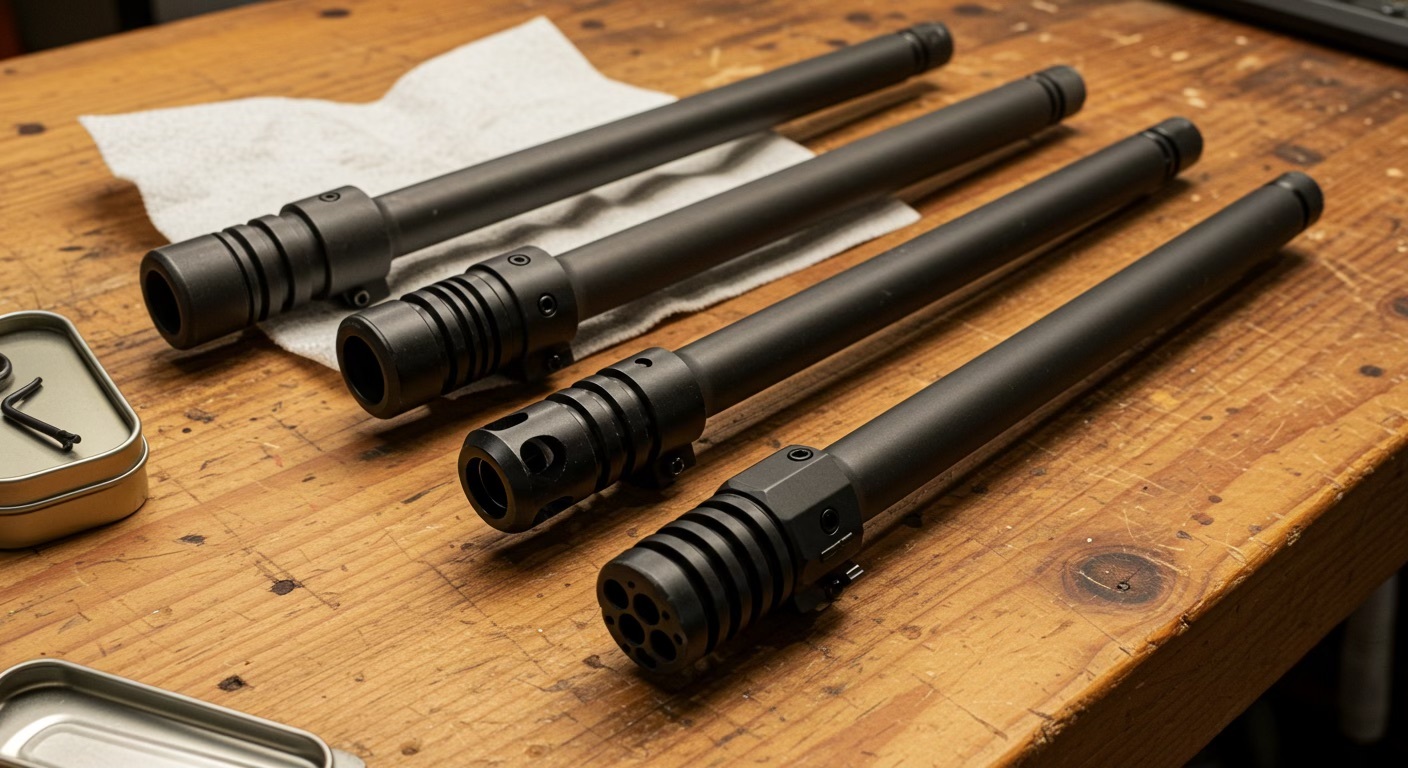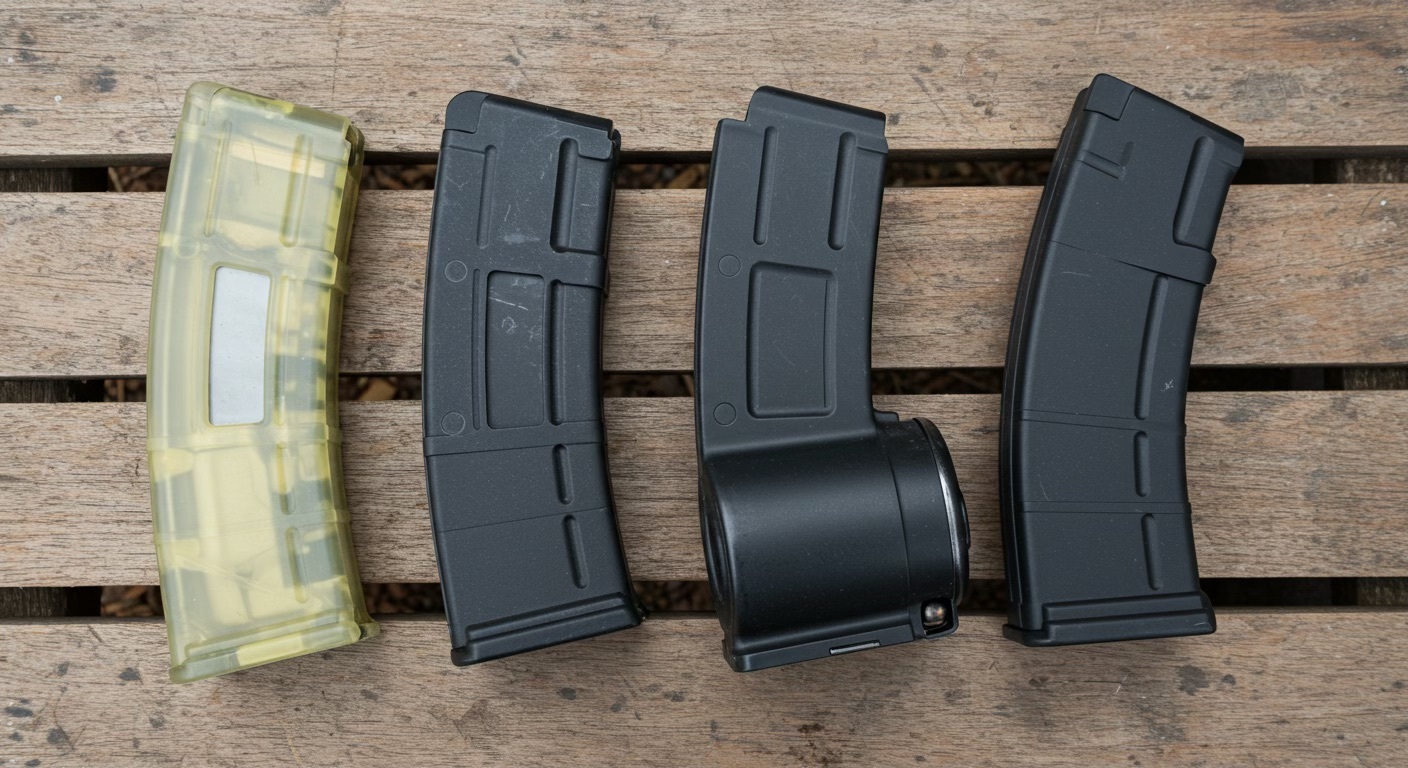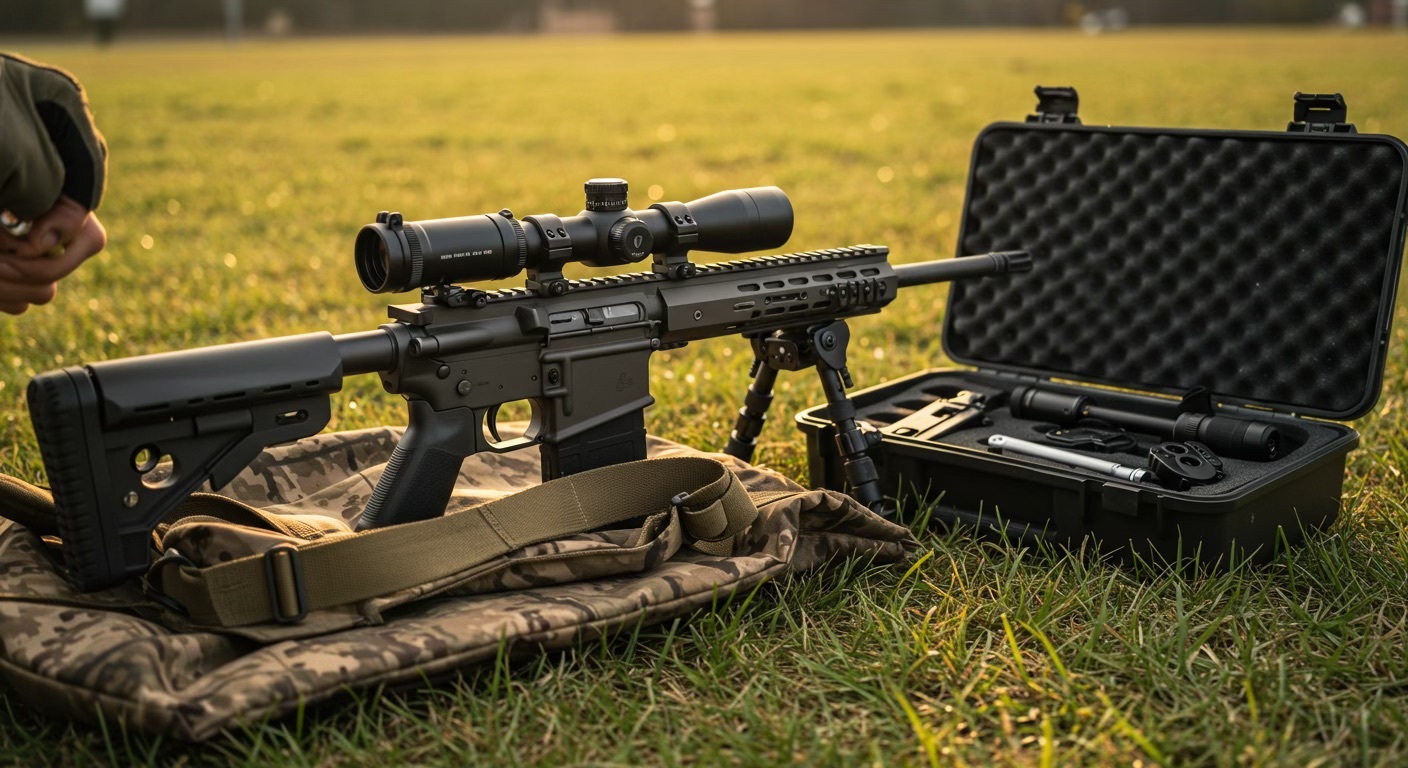The 338 ARC has quickly gained favor with precision shooters and hunters for its strong ballistics on the AR‑15 platform. It bridges standard AR cartridges and larger hunting rounds while keeping recoil manageable for follow-up shots.
Its design delivers notable downrange energy and terminal performance, making it suitable for medium and large game when paired with proper shot placement and optics. Hunters appreciate how it maintains effectiveness without requiring a heavier rifle platform.
Transitioning to 338 ARC requires specific components, such as correct barrel, bolt, and magazine choices, and attention to headspace and gas timing for reliable function. Builders often test multiple setups to fine-tune performance for their intended use.
This guide walks you through each stage of the process so you can make informed decisions based on your shooting goals, preferred configurations, and field conditions. It equips you with practical insight to plan and build confidently.
Resources like AR15 Parts help you find compatible uppers, barrels, and BCGs while avoiding common pitfalls during setup and testing. Our curated parts and guidance make the process easier, whether you're building your first upper or refining an existing setup.
Master the 338 ARC Cartridge Fundamentals
The 338 ARC represents a significant advancement in AR‑platform cartridge design. It was engineered to maximize the potential of the AR‑15 magazine well while delivering substantial terminal performance. Based on the proven 6.5 Grendel case, it enables heavier projectiles without abandoning the platform's familiar dimensions.
This cartridge fires 338‑caliber bullets at velocities that were once impractical in the AR‑15. Its ballistic profile supports both hunting and precision roles, giving shooters more reach and stopping power without requiring a larger rifle system or entirely new components.
Medium to long‑range performance is one of its main strengths. With 200‑grain bullets maintaining supersonic speeds well past 800 yards, the 338 ARC offers reliable energy retention. Bullet weights between 160 and 230 grains give marksmen flexibility across shooting disciplines and varied game types.
A 30‑degree shoulder angle and efficient powder capacity help the cartridge operate within AR‑15 magazine constraints. When configured correctly, AR15 Parts offers complete upper assemblies built to harness its full potential. The short case length also supports reliable feeding without compromising velocity.
Feed reliability remains a critical factor due to overall length and bullet profile differences. Selecting magazines designed for the Grendel family improves performance, though some standard AR magazines may function with certain loads. Testing ammunition combinations ensures field reliability and consistent cycling.
Choose the Right Barrel for Optimal Performance

Choosing the correct barrel forms the foundation of any successful 338 ARC upper build. Barrel length greatly affects velocity and handling; 16-inch barrels strike a practical balance for many shooters, while shorter barrels improve maneuverability in tight terrain.
Twist rate selection is critical to stabilize the cartridge’s wide bullet weight range. Most makers recommend 1:7 or 1:8 twists; 1:7 best stabilizes the heaviest bullets yet still performs well with lighter projectiles, offering broad versatility for mixed-use rifles.
Key barrel considerations include:
- Barrel Length: 12–16″ for maneuverability, 16–18″ for velocity and balance, 20″+ for max speed and long-range work.
- Twist Rate: 1:7 for heavy 200- to 230-gr bullets, 1:8 for lighter-to-medium weights.
- Profile & Material: heavy profiles manage heat and improve rigidity; stainless steel offers corrosion resistance and tight accuracy.
- Manufacturer Quality: Shaw, Satern, and similar makers maintain match tolerances and optimize contours for the 338 ARC’s pressure curve.
Chamber specifications demand match-grade attention for consistent seating and pressure control. Proper chambers improve accuracy and brass life; choosing quality barrels with tight tolerances pays dividends in reliability and long-term performance.
Configure a Reliable Bolt Carrier Group
The 338 ARC needs a bolt carrier group built for its case dimensions and pressures. The bolt face must be machined for the larger 6.5 Grendel‑style case head, which means standard 5.56 bolts are not compatible for safe or reliable use.
Choosing the right carrier involves selecting between standard and enhanced options. Enhanced carriers provide added strength and durability under higher pressures. Matching the carrier weight and gas key alignment to your barrel’s gas system ensures smooth cycling and proper timing.
Extractor and ejector components play a critical role in the function. Strong extractors with correct spring tension improve reliability under stress. A properly tuned ejector must push spent cases clear of the ejection port, especially with heavier 338 ARC brass.
Testing your BCG with the ammunition you plan to use is essential. Variations in powder charge and bullet weight can affect extraction timing and case movement. Early range testing helps identify setup changes before field use.
A properly configured BCG should extract and eject cases consistently across the loads you use. Taking time to tune and verify the system reduces malfunctions and supports reliable performance over extended shooting sessions.
Optimize Your Gas System for Consistent Cycling
Gas system tuning plays a crucial role in 338 ARC performance and directly influences reliability and accuracy. The cartridge produces higher pressures and different pressure curves than standard AR‑15 rounds, making gas port size and system length important setup considerations.
Most builders find that carbine‑length systems work well on barrels up to 16 inches. Mid‑length systems may perform better on longer barrels by providing smoother cycling and reduced wear on internal parts over extended use.
Gas port sizing needs to balance reliable cycling with controlled extraction. Oversized ports can cause harsh operation and brass damage, while ports that are too small may lead to short‑stroking and inconsistent function in field conditions.
Adjustable gas blocks help fine‑tune performance across ammunition types and shooting environments. They let you reduce gas flow for lighter bullets or increase it for heavier loads. Suppressed setups especially benefit from the ability to manage excess back‑pressure.
The 16" 338 ARC Complete Upper includes a gas system refined through testing and tuning. These assemblies reduce guesswork and support consistent timing, reliability, and accuracy across different bullet weights and conditions.
Ensure Smooth Feeding with Proper Magazines

Magazine selection plays a crucial role in 338 ARC reliability because the cartridge's length and bullet profiles create unique feeding demands. Standard AR-15 magazines often struggle to accommodate these dimensions, making Grendel-type magazines a more dependable option for most builds.
Key magazine considerations include:
- Dedicated Grendel-style followers and feed lips designed for the cartridge's geometry
- Reduced capacity ranges of 17–20 rounds, depending on design and bullet length
- Brand and ammunition testing to validate feeding reliability under real conditions
Feed ramp geometry must align with your magazine choice to ensure smooth chambering. Some barrel makers tailor feed ramp profiles specifically for 338 ARC use, and light polishing can help if performed carefully.
Real-world testing highlights the importance of compatibility. In one build, factory ammunition produced feeding issues in aftermarket magazines. Switching to Grendel-family magazines immediately restored 100% reliability across different bullet weights and loads.
Select Proven Complete Upper Assemblies
Pre-assembled upper receivers offer major advantages for shooters who want proven performance without managing individual parts. Manufacturers test their assemblies for proper headspace, gas timing, and overall reliability. The 12.5" 338 ARC Complete Upper is an example of a system built specifically for the cartridge.
Complete uppers usually include matched bolt carrier groups, tuned gas systems, and barrels from reputable manufacturers. These assemblies undergo cycling and accuracy tests before shipping. Many shooters appreciate the reduction in guesswork and the immediate compatibility benefits.
Quality control procedures often cover headspace verification and gas system evaluation. Accuracy testing ensures consistent performance with common bullet weights. Documentation from these tests can help shooters troubleshoot minor issues during break-in or early use.
Selecting a complete upper should align with your primary use. Hunters may prefer shorter, lighter options for mobility, while precision shooters often choose heavier barrels and match components. Understanding how you’ll use the rifle guides the best configuration.
AR15 Parts offers multiple configurations for different disciplines and goals. Their catalog includes options suited for hunting, competition, and general field use. These systems help users avoid common fitment problems during assembly and setup.
Enhance Performance with Compatible Accessories

Optics for 338 ARC builds should match the cartridge's ballistic range and shooting role. Quality glass with dependable tracking and appropriate magnification is essential. Variable scopes in the 3‑12x or 4‑16x range work well for most hunting and precision applications.
Muzzle devices affect both performance and shooter comfort due to the cartridge's increased recoil and blast. Compensators help control muzzle rise, while flash hiders reduce signature in hunting scenarios. Suppressors require attention to threading and barrel length for proper function.
Handguards should provide adequate barrel clearance and accessory compatibility. Free‑floating designs improve accuracy by preventing barrel contact. Length selection should account for weight, grip style, and mounting needs without restricting heavier barrel profiles.
Trigger upgrades can unlock the cartridge's accuracy potential. Crisp, consistent breaks improve shot placement and control. Single‑stage triggers suit hunting applications, while two‑stage options often provide better precision support in target or competition settings.
Additional accessories such as bipods, sling mounts, and offset sights can further enhance functionality. Choosing durable components that match your rifle's weight and intended use ensures stability, comfort, and adaptability across field and range environments.
Frequently Asked Questions
What makes the 338 ARC different from other AR cartridges?
The 338 ARC fires heavier bullets than traditional AR cartridges while remaining compatible with the AR-15 platform. It uses a modified 6.5 Grendel case to launch 338-caliber bullets weighing 160–230 grains.
This design delivers significantly more downrange energy than cartridges like 5.56 or 6.5 Grendel. It excels at medium to long-range applications where terminal performance and retained velocity matter most.
Can I use standard AR-15 magazines with 338 ARC?
Some standard AR-15 magazines may function with 338 ARC, but they are not ideal for consistent performance. The cartridge’s larger case diameter and overall length can create feeding challenges.
Dedicated Grendel-type magazines offer far better reliability and proper geometry. Standard magazines also experience reduced capacity when used with cartridges not designed for their internal dimensions.
What barrel length works best for 338 ARC?
Your intended use determines the best barrel length. Many shooters find that 16- to 18-inch barrels provide an excellent balance of velocity, handling, and portability for general applications.
Shorter barrels, like 12.5 inches, improve maneuverability but lose some velocity. Longer barrels increase bullet speed, though gains may taper due to powder capacity and burn rate limits.
Do I need special tools to build a 338 ARC upper?
Building a 338 ARC upper uses the same core tools as other AR assemblies, including barrel nut wrenches, torque wrenches, and headspace gauges. Proper assembly practices are essential at every step.
Because the cartridge operates at higher pressures, verifying headspace is especially important. If you’re not comfortable with AR assembly, purchasing a complete upper from a trusted source is a safer option.
How does 338 ARC performance compare to traditional hunting cartridges?
The 338 ARC offers terminal performance similar to cartridges like the 30-30 Winchester or 300 Savage while providing superior range and ballistic efficiency. It maintains energy effectively at extended distances.
With the right bullet, it performs well on medium game beyond the reach of many lever-action cartridges. Semi-automatic capability and magazine capacity also give hunters added advantages in the field.
Plan Your 338 ARC Build with Confidence Now!
Building a 338 ARC upper demands attention to component compatibility and system tuning, but the payoff is substantial. The cartridge elevates the AR-15 platform into a capable medium to long-range hunting and precision tool without sacrificing familiarity or handling.
Success depends on informed barrel selection, proper gas system adjustment, and reliable magazine pairing. When these elements work together, the platform delivers consistent accuracy and dependable terminal performance across varied shooting environments.
Whether you assemble from individual parts or choose a complete setup from a trusted manufacturer, understanding these requirements ensures long-term reliability. Careful planning allows your 338 ARC upper to perform confidently in the field for years.
About AR15 Parts
AR15 Parts has over a decade of experience providing high-performance AR-15 components and complete upper assemblies for hunters and precision shooters. We deliver 338 ARC solutions that include full uppers, barrel assemblies, and bolt carrier groups built specifically for this demanding cartridge.
Our product selection features components from premium manufacturers to ensure reliability and accuracy in every build. Each offering is chosen to support consistent performance in field, range, and competition environments.
Our team of certified armorers combines real-world shooting experience with technical expertise to configure systems that perform under demanding conditions. Rigorous quality control and testing protocols verify the reliability of every complete assembly before it leaves our facility.
Browse AR uppers & assemblies to explore configurations that support accuracy, reliability, and proper 338 ARC performance. Find a setup that matches your shooting goals and field conditions today.

